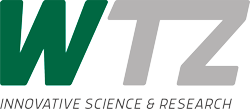GENERAL NOTES CONCERNING SIMULATION
Prior to manufacture, every new component goes through a development process in the simulation phase which determines the framework conditions using various tools such as thermodynamic design and 3D flow simulation. The results of the simulation flow into the constructive design and calculation of the components.
REMIT
WTZ Roßlau supports its clients with challenging and demanding tasks and activities and runs calculations and simulations according to analytical and numerical methods.
- Strength calculations
- Structural analyses, linear and non-linear statics
- Intrinsic value calculations
- Frequency response analyses
- Operational stability analyses
- Thermal analyses
- Thermo-mechanical analyses
- Flow calculations
- Calculation of machine parts
CORE EXPERTISE
We have been dealing with topics and projects in the field of combustion engines at WTZ Roßlau for decades.
The core expertise here is in the area of large gas, diesel, heavy oil and dual fuel engines for stationary and mobile applications in the industrial and ship’s engine areas. Faster development times and reduced costs are required in modern product development processes. The components always have to be more powerfully and efficiently designed, without affecting the stability and durability of components or systems.
THE DEVELOPMENT PROCESS CHAIN
The thermodynamic design and determination of the marginal conditions takes place using 0D/1D simulation. These are taken into consideration as system boundaries during 3D-CFD simulation. Components can be pre-selected on the basis of the preliminary design using the simulation tools. The results of the simulation flow into the constructive design and calculation of the components. The manufacturing, post-processing and finishing of test components can take place in our in-house prototype construction. The components that are produced are fitted to WTZ single-cylinder research engines.
GOALS
- Combustion procedure development
- Optimisation of efficiency and emissions
- Component testing

